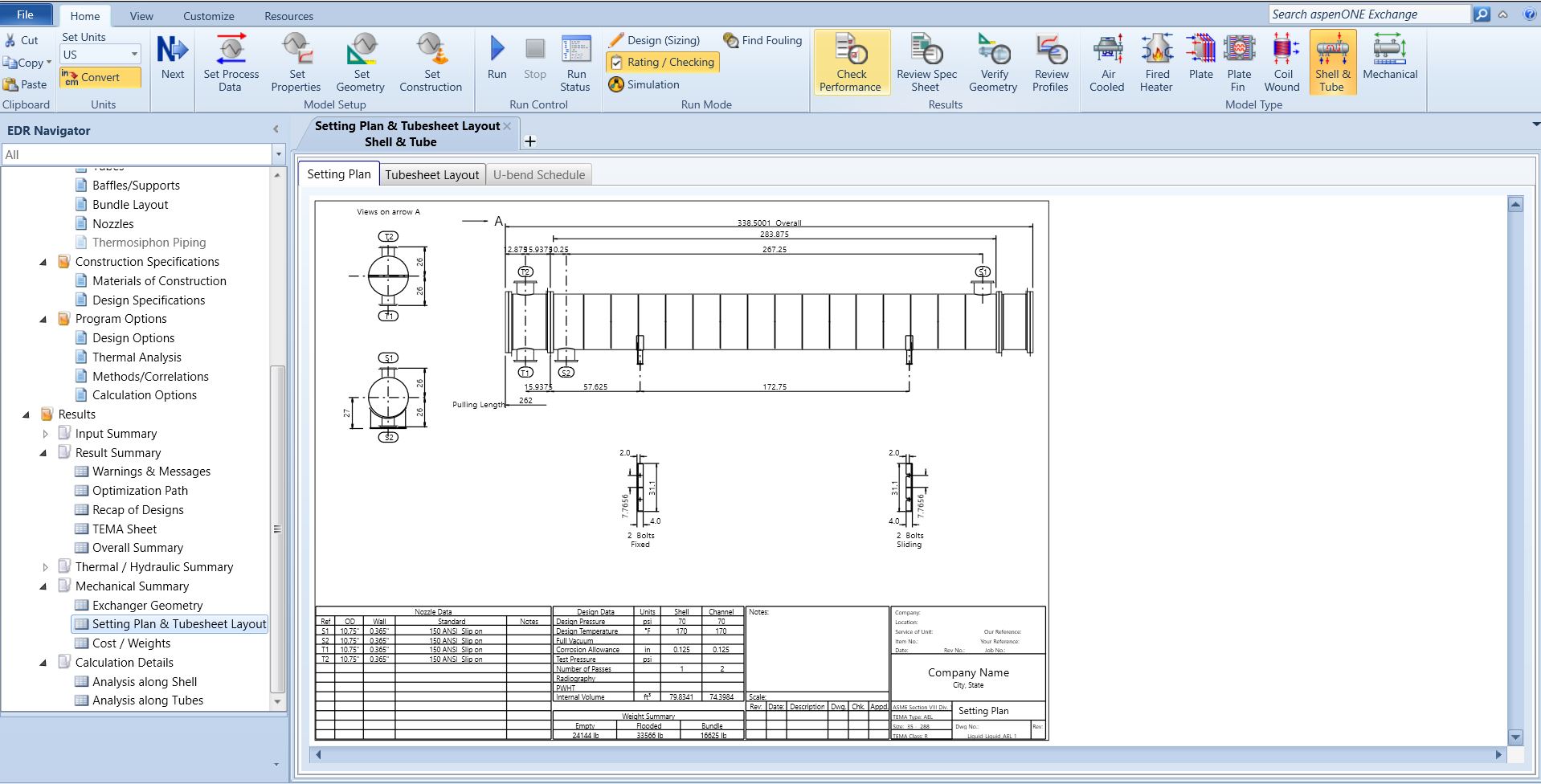Shell and Tube Heat Exchanger Design Using Aspen EDR Software

About Course
Minimize Capital Cost and Improve Process Design
The Aspen Exchanger Design & Rating product family integrates rigorous process models with the industry’s most comprehensive heat exchanger modeling capabilities.
Benefits include:
- Typical savings of 10-30% on the equipment cost per heat exchanger.
- Potential savings of millions of US dollars annually through integration with Aspen Plus® and Aspen HYSYS® to identify areas to reduce energy, capital and operational costs.
- Increased engineering efficiency, particularly fast-track front-end engineering, through fully integrated tools for process design.
Aspen HTFS® Research Network
Aspen HTFS Research Network compiles AspenTech’s proprietary theoretical models
and correlations developed through more than 40 years of experimental study and analysis. Customers can access the research network from Aspen EDR to validate their design practice against documented methods, models and source data
Best-in-Class Physical Properties Methods and Data
The Aspen EDR product family accesses the world’s largest database of pure component and phase equilibrium data for conventional chemicals and electrolytes. The database is regularly updated from the U.S. National Institute of Standards and Technology (NIST), which ensures easy access to the best available experimental property data. Accurate transport properties and phase equilibrium data are essential to accurate exchanger design and simulation.
Wide Range of Applications
The products facilitate the full range of practical process applications for a wide range of exchanger types including: shell & tube, double pipe, multi-tube hairpin, air coolers, economizers, plate and frame, plate fin, coil-wound and fired heaters from conceptual design to operational troubleshooting. This flexibility allows process streams to be single phase, boiling or condensing vapors, single component or any mixture with or without non- condensable gases in any condition.
Common User Interface
All seven products in the Aspen EDR product family operate within a common user interface which automates data transfer from one program to another, allowing engineers to compare the advantages of different exchanger types. Access to AspenTech’s world class property package with more than 25,000 components and 35+ vapor equilibrium methods is accessible in each program.
The Aspen EDR product family uses the power and flexibility of the Microsoft® Windows environment, allowing you to fully explore unit geometry and performance detail. Products support “drag & drop” interfacing with Microsoft Excel® as well as high-level communication with other software and the programs are tightly integrated with Aspen Simulation Workbook, providing easy and robust case studies within Microsoft Excel.
Meeting the Heat Transfer Needs of Process Engineers, Thermal Experts, and Fabricators
Features
Common Aspen EDR user interface
- Design optimization (cost-based)
- Run-time integration with Aspen Plus and Aspen HYSYS
- Access to the world’s largest property package
- Aspen HTFS Research backed methods
- Access to training materials, example models, and more from the product
Output
Ease of use reduces the need for training
- Reduce equipment costs by 30% or more
- Overall process optimization and improved process reliability
- More dependable results and process consistency
- High degree of accuracy
Aspen Shell & Tube Exchanger
Aspen Shell & Tube Exchanger enable expert and casual users to realize optimum design, rating and simulation of their respective exchangers. High level run-time integration with Aspen Plus and/or Aspen HYSYS allows engineers to rigorously model heat exchanger operation and identify capital saving opportunities in the context of the overall process
Aspen Shell & Tube Exchanger
Features
- All TEMA style vessels
- Bi-directional interface with Aspen Shell & Tube Mechanical
- Run-time integration with Aspen Plus and Aspen HYSYS
- Design, rating, simulation, and find fouling calculation modes
- All common applications including knockback condensers, flooded evaporator, kettles, falling film evaporators, thermosiphons, multi- shell feed-effluent trains
- Double-pipe and multi-tube hairpin exchangers
- Multi-shell capability with no practical limits on shells
- Plain, low finned, or longitudinally finned tubes and general tube side and shell side enhancement methods
- Single, double, and triple segmental baffles, no tubes in window, rod baffles, and unbaffled exchangers
- Proper handling of fluids with two immiscible liquid phases
- Background ASME mechanical design for more accurate sizing, costing, and weight calculation
Output
- Optimization path that identifies the most economical design selection, possible alternative designs and controlling design constraints
- Extensive warning and error reporting identifies potential operational problems
- Summary of exchanger thermal-hydraulic performance
- Fully completed TEMA-style data sheet
- Interactive tube layout and setting plan drawings
- Comprehensive incremental output
- Vibration analysis (using proprietary HTFS and TEMA methods)
- Conceptual cost estimating, customized to your own labor and material costs
- Extensive graphing capabilities
- Thermosiphon stability checks and flow pattern evaluation
Sources : Aspen Technology, Inc.
Process Simulation Modeling Simulation & Control Telegram Group
Pressure Vessel Engineering Limited, Ontario, Canada
Course Content
Overview of Aspen Shell and Tube Exchanger
-
Overview of Aspen Shell and Tube Exchanger
08:10
